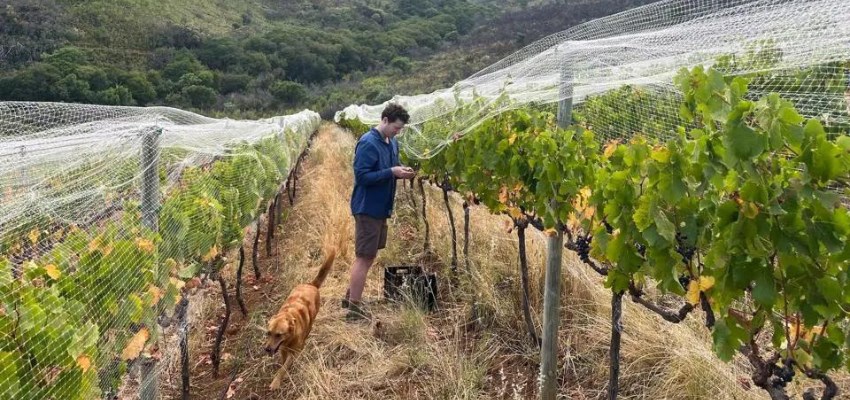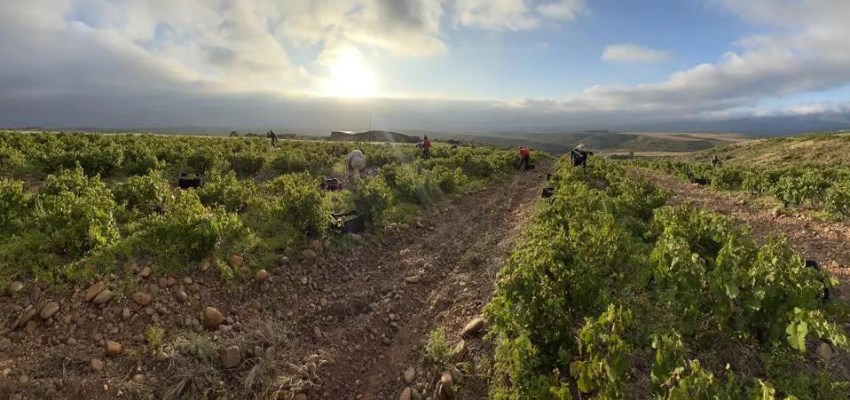Wine enthusiasts often associate the grape harvest season with the crisp, cool fall days in the Northern Hemisphere. However, it's easy to forget that while we're bundled up and dreaming of spring, the Southern Hemisphere is basking in the warmth of summer and preparing for its own harvest. From the rolling hills of South Africa to the sun-drenched valleys of Chile, the vineyards of the Southern Hemisphere are alive with activity as winemakers gear up for the busy months ahead.
This five-part series will journey through the major winemaking countries of the Southern Hemisphere, providing updates on each region's harvest and insights into the unique challenges and triumphs of this year's vintage. We begin the adventure in South Africa, a country with a rich winemaking history dating back to the 17th century.
South Africa is home to a diverse array of wine regions, each with a distinct terroir and climate. The Western Cape, which encompasses the famous Stellenbosch and Franschhoek valleys, is known for its bold, full-bodied red wines made from Cabernet Sauvignon, Merlot, and Pinotage, a cross between Cinsaut and Pinot Noir that is unique to South African. The cooler coastal regions, such as Walker Bay and Elgin, produce elegant Pinot Noir and crisp Chardonnay.
De Trafford Wines, Stellenbosch

We start with a small subregion of Stellenbosch, where the vineyards of De Trafford Wines are wedged on a sloped hillside between two mountains.
"We're about 400 meters above sea level, situated between the Stellenbosch mountain and the Helderberg mountain, nearly 20 kilometers from the ocean," says owner David Trafford. His main focus is Cabernet Sauvignon and Syrah, although he does grow a small amount of Cabernet Franc and Merlot and buys Chenin Blanc, mostly from old vines.
This growing season presented some of Trafford's most interesting challenges since the winery's first vintage in 1992.
"It was the wettest winter ever recorded in more than 100 years. Winter conditions with regular rain, wind, and pretty cold weather continued until the end of October, and we had practically no spring," Trafford reveals. "It led to high disease pressure and reduced yields, with bunch weights down by about 30 percent."
Yet Trafford remains optimistic about the quality of the wines. "I always think of current vintages in terms of other vintages. It feels similar to 2015, with a touch of 1997. The analysis looks excellent in general, and the colors on the reds are rich and bright, with low pH and small berries with thick skins. Fruit intensity is there, so I think we can produce something exceptional."
Trafford is particularly excited about their young Cabernet Sauvignon vineyard, planted in 2016. "This young Cabernet is really coming of age, and we're looking forward to seeing how that turns out," he shares, emphasizing his preference for mature vineyards over old vines.
As the harvest progresses, Trafford and his team are carefully managing the winemaking process to showcase the best of this unique vintage that highlights the distinct terroir of their Stellenbosch subregion.
Sijnn Wines, Malgas

David Trafford and his wife, Rita, are also co-owners of Sijnn, a unique wine project located in a completely different part of South Africa near the mouth of the Breede River, in the remote Malgas ward near the country's southeastern coast. Along with their partners, Simon Farr and Quentin Hurt, the Traffords have been exploring the potential of this distinctive terroir.
Taking advantage of the warmer maritime climate and unique stony soils here, Sijnn grows a whole range of Mediterranean varieties, including Syrah, Grenache, Mourvèdre, Touriga Nacional, Tempranillo, Trincadeira, Carignan and Cabernet Sauvignon along with white varieties Chenin Blanc, Roussanne, Viognier, Verdelho, Vermentino and Assyrtiko. According to Trafford, the Sijnn program for the wines is to produce a flagship red and white from any blend of these varieties that best expresses each vintage and the best possible wine, meaning each vintage is a new adventure with a wide range of options for a blank canvas. The 2024 growing season at Sijnn presented its own challenges, with wet and cool conditions persisting well into January.
Click HERE to read the full article.